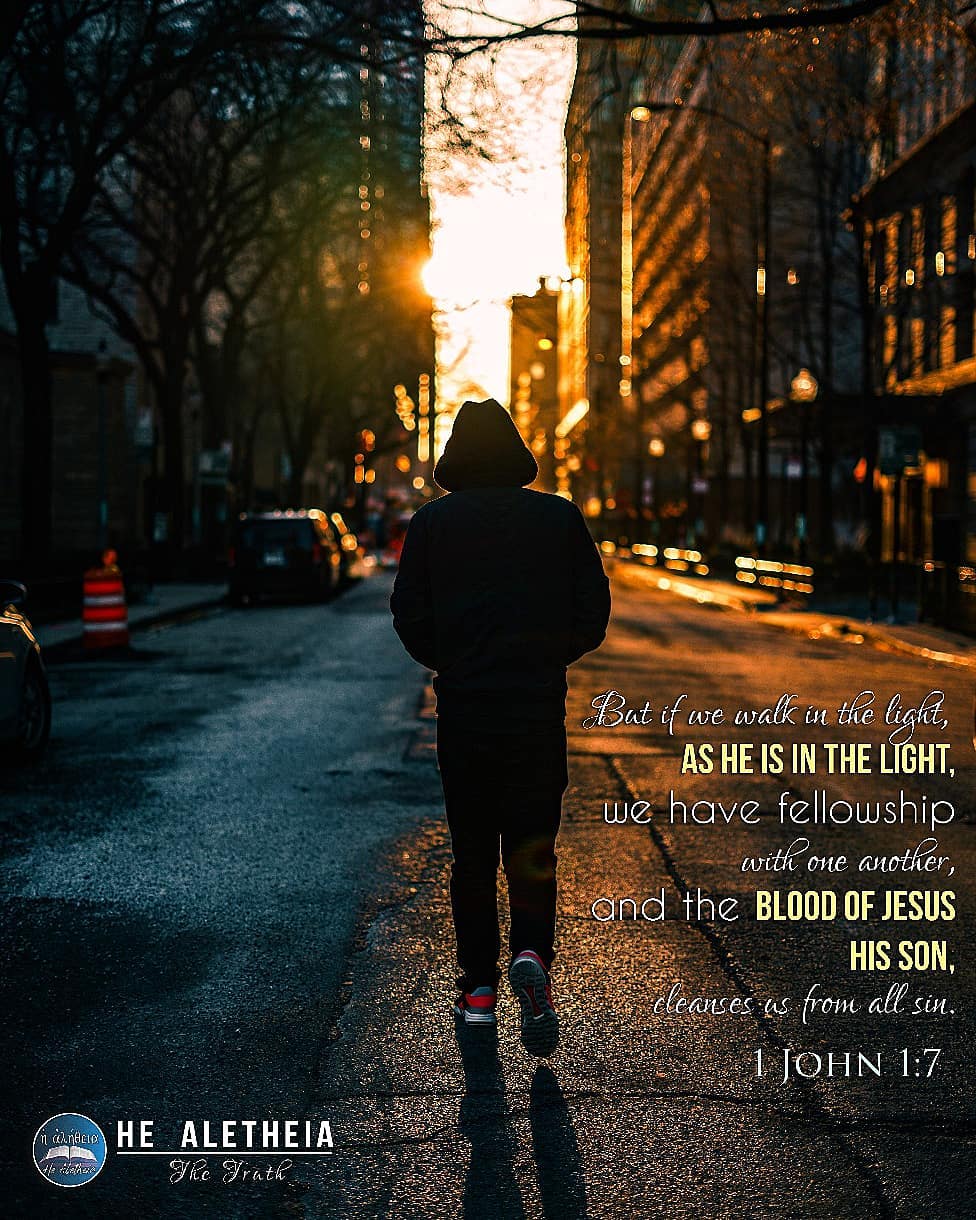
Continual confession of sin is an indication of genuine salvation. While the false teachers would not admit their sin, the genuine Christian admitted and forsook it (Ps. 32:3–5; Prov. 28:13). The term “confess” means to say the same thing about sin as God does; to acknowledge his perspective about sin. While 1 John 1:7 is from God’s perspective, v. 9 is from the Christian’s perspective. Confession of sin characterizes genuine Christians, and God continually cleanses those who are confessing (cf. v. 7). Rather than focusing on confession for every single sin as necessary, John has especially in mind here a settled recognition and acknowledgment that one is a sinner in need of cleansing and forgiveness (Eph. 4:32; Col. 2:13).
I am the Light of the World
Courtesy: MacArthur Study Bible
#bible #biblestudy #biblejournaling #bibleverse #christian #christchurch#jesus #wordoftheday #word #thewordofgod #godsword #verseoftheday
Courtesy: Mac Arthur Study Bible
John 8:12–21 Excluding the story of the adulterous woman in 7:53–8:11, this verse attaches itself well to 7:52. The word “Again” indicates that Jesus spoke once more to the people at this same Feast of Booths, or Tabernacles (see 7:2; 10). While Jesus first used the water-drawing rite (7:37–39) as a metaphor to portray the ultimate spiritual truth of himself as Messiah who fulfills all that the feast anticipated, he then turned to another rite that traditionally occurred at the feast: the lighting ceremony. During Tabernacles, four large lamps in the temple’s court of women were lit, and an exuberant nightly celebration took place under their light with people dancing through the night and holding burning torches in their hands while singing songs and praises. The levitical orchestras also played. Jesus took this opportunity of the lighting celebration to portray another spiritual analogy for the people: “I am the light of the world.”

John 8:12 I am the light of the world. This is the second “I am” statement (see 6:35). John has already used the “light” metaphor for Jesus (1:4). Jesus’ metaphor here is steeped in OT allusions (Ex. 13:21–22; 14:19–25; Ps. 27:1; 119:105; Prov. 6:23; Ezek. 1:4; 13; 26–28; Hab. 3:3–4). The phrase highlights Jesus’ role as Messiah and Son of God (Ps. 27:1; Mal. 4:2). The OT indicates that the coming age of Messiah would be a time when the Lord would be a light for his people (Isa. 60:19–22; cf. Rev. 21:23–24) as well as for the whole earth (Isa. 42:6; 49:6). Zechariah 14:5b–8 has an emphasis on God as the light of the world who gives living waters to his people. This latter passage probably formed the liturgical readings for the Feast of Tabernacles. For further significance of Jesus as the “light,” see notes on John 1:4–5 and 1 John 1:5. Whoever follows me. The word “follows” conveys the idea of someone who gives himself completely to the person followed. No half-hearted followers exist in Jesus’ mind (cf. Matt. 8:18–22; 10:38–39). A veiled reference exists here to the Jews, following the pillar of cloud and fire that led them during the exodus (Ex. 13:21).
